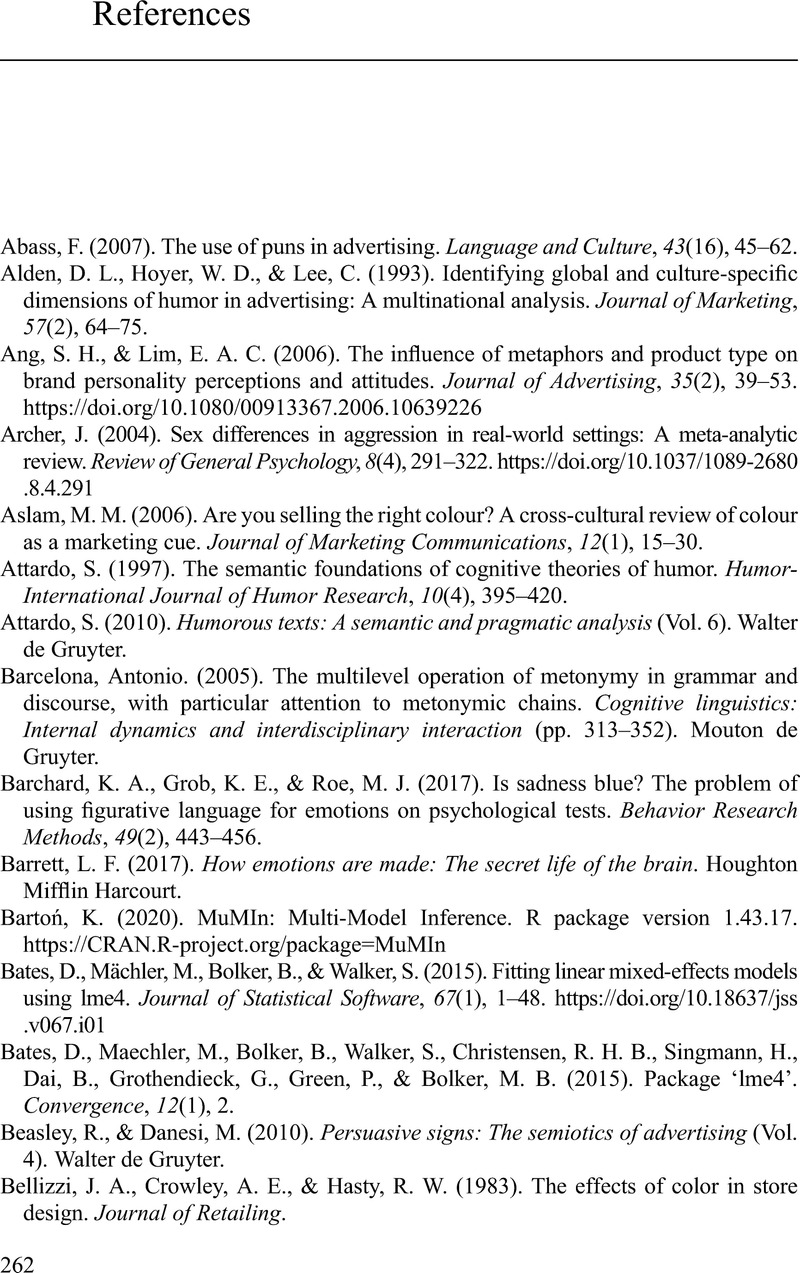References
Published online by Cambridge University Press: 14 August 2021
Summary

- Type
- Chapter
- Information
- Unpacking CreativityThe Power of Figurative Communication in Advertising, pp. 262 - 276Publisher: Cambridge University PressPrint publication year: 2021

